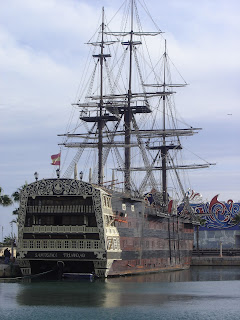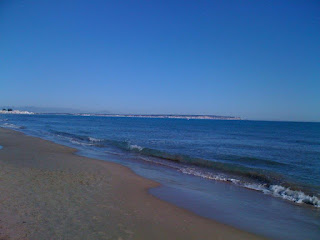Santisima Trinidad - Spanish Galleon in Alicante Harbour

The "Santisima Trinidad" is now moored in Alicante harbour. I visited there with my family and then the week after ate in the restaurant. I HIGHLY recommend a visit, either for a drink or for a meal. Here is the history behind this incredible ship. The "Santisima Trinidad" was launched in 1769 in the Habana (Cuba) navy yard. At that moment, the ship was known as "Escorial" (because Escorial refers to a great Spanish monastery) due to its magnificence and was the biggest and most armed vessel in the world. It took two years to build, was 63 metres (208 feet) long, 17 metres (55 feet) wide and 8 metres (27 feet) high. It weighed 4.950 tonnes, had 140 cannons and a 160 man crew. Several fine woods were used in its construction such as mahogany. The "Santisima Trinidad" took part in a lot of decisive historical events while it was crossing the seas. The galleon was the Spanish flagship in July 1779 during the American War of Independence when Spa...


